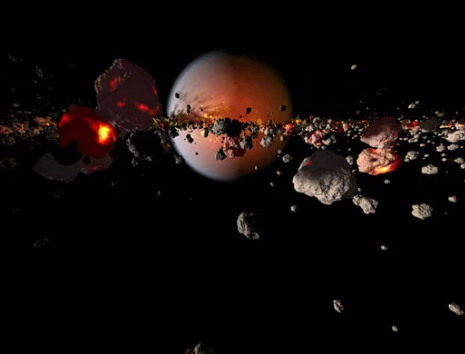Ocean on Jupiter’s Moon Europa – Europa
Today’s article is all about Europe and Jupiter Moons. A habitable zone is frequently mentioned while discussing the search for life in the universe. That habitable zone is the distance from the Sun at which water becomes liquid on its surface.
As a result, finding another exoplanet in our habitable zone is really exciting. It is fortunate that our planet is in a habitable zone, which is why oceans exist. Mars and Venus are on the outside of the habitable zone, while Jupiter, which is five times further from the Sun than Earth, contains certain moons with oceans, such as Europa. How do the oceans rule on Europa?
Scientists Noticed something on Jupiter’s Moon Europa
You can easily see the big moons of Jupiter with a small telescope in fact, Galileo discovered it for the first time in 1609 or 1610. And this discovery was important because humans for the first time saw something that was not orbiting the Earth. These moons Galileo noted what orbiting Jupiter, rather, if you see these moons with the telescope, you’ll note their positions changing around Jupiter in a few hours. Jupiter has about 80 moons, but these four big moons are very interesting.

Their names, according to the distance from the Jupiter are IO, EUROPA, GANY-MEDE and CALLISTO. Gany-Mede is a very big moon, it is bigger than mercury and Pluto. In fact, this is the biggest moon of our solar system. But today we will talk about its moon Europa.
Galileo saw Europa as a dot, all the moves were looking like dots much detail was not visible. For us I mean humans, the first good view from close proximity was received from voyager 1 space craft when it flew past it in March 1979.

Will passing it look, it’s picture. There was a little disappointment, because this moon look like a big ball. Normally moons have craters which look interesting but this looks just like a ball (a boring one). After a few months in July 1979, Voyager 2 spacecraft went past Europa and took its pictures a little closely.

It seemed that this might be an interesting place, some criss cross marks could be seen on that ball. The perception was something interesting is going on there. Our interest increased when Galileo spacecraft (not Galileo, but the spacecraft named after him) reach, Jupiter in 1995.

This was not a flyby mission, it was a bit, which took pictures of Jupiter and a different moons of Jupiter from 1995 to 2003. From that, we learned that Europa and the other moons are very interesting.
NASA Destroy this Galileo Spacecraft
In 2003 NASA destroy this Galileo spacecraft inside Jupiter, the reason being the scientific did not want that the spacecraft by mistake, collides with one of the moons because the discoveries of Galileo spacecraft showed the moons of Jupiter are very very interesting. What example, the nearest moon of Jupiter IO looks like a pizza.

The reason is, there is a lot of volcanism on it. In fact, it is the most volcanically active place of our solar system.
Why is volcanism taking place there?
The answer to this will also give us a clue as to how Oceana present on Europa. There are two reasons for it.
- The odd bits of bigger moons which astronomers call Galilean moons or Galilean satellite are a little elliptical. The reason is suppose that is IO. Jupiter is pulling it towards itself due to gravity but the gravity of other moons Europa, Ganymeda, Callisto is also it towards them.
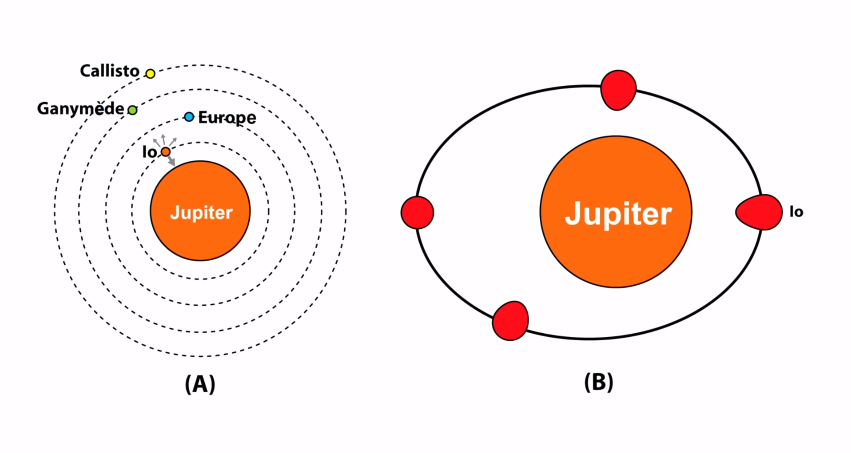 But the gravity of the moons Europa, Ganymede, Callisto is also pulling it towards them. So their orbits (if you are interested in orbital mechanics, it can further explain it) due to the interaction are a little elliptical.
But the gravity of the moons Europa, Ganymede, Callisto is also pulling it towards them. So their orbits (if you are interested in orbital mechanics, it can further explain it) due to the interaction are a little elliptical. - The second factor is “Tidal Heating”. The main concept of it is, Spose, I am Jupiter and Jupiter is very big compared to earth (13:00 earths can be fitted inside Jupiter). The gravity of Jupiter on the near side of IO is more compared to the far side
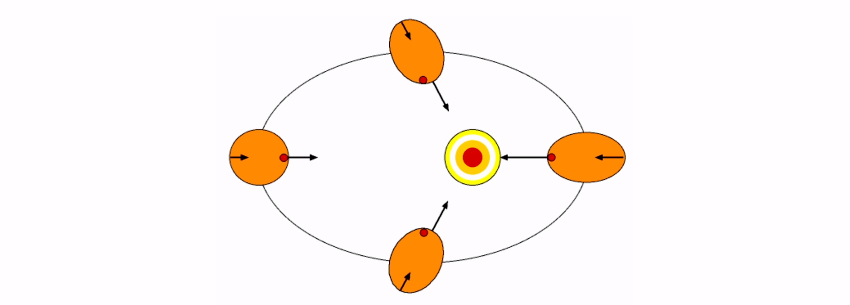 Because the moon is very small, and Jupiter is very big. Now is the orbit of this moon is elliptical then sometimes it is near Jupiter and sometime far from it, and when it is orbiting, there is a difference in Jupiter’s tidal forces (the near and far side) when it is near compared to when it is far. In a sense the core of IO (Jupiter’s moon) is constantly becoming big and small.
Because the moon is very small, and Jupiter is very big. Now is the orbit of this moon is elliptical then sometimes it is near Jupiter and sometime far from it, and when it is orbiting, there is a difference in Jupiter’s tidal forces (the near and far side) when it is near compared to when it is far. In a sense the core of IO (Jupiter’s moon) is constantly becoming big and small.
So you can guess (as in this squishy ball) there is an extreme increase in the interest heat (due to friction). This is the reason it is extremely hot inside IO and molten lava is coming out of it. These tidal effects are the same as tides on Earth, but these sea have a maximum difference of about 60 feet. On IO (we are not talking about water) the rocky surface goes almost 300 feet up and down while it is orbiting Jupiter and its orbit is one 1/2 days, less than two days for one orbit around Jupiter.
So, you can imagine it is constantly heating up and lava is coming out constantly.
Others Moons of Jupiter.
The same process is taking place on the other moons of Jupiter but it is not so extreme because they are a bit far off. If any moon is a little far off and there is a lot of present on outer part of our solar system, but in frozen form as in comets. Similarly, if there is frozen water on the moon there is so much heat in its core (due to friction) that it can melt water then liquid water can be present there.
Ocean On Europa Evidence
As in Europa, it has no atmosphere, but if there is surface of frozen ice there, it can stop this water from evaporating. So you have a frozen surface on top and a sea of liquid water underneath, because there is a heat in its core due to tidal heating. I think it is amazing thing and not only on Europa, idea is this type of sea is also present on Jupiter moons Ganymeda and maybe also Callisto.
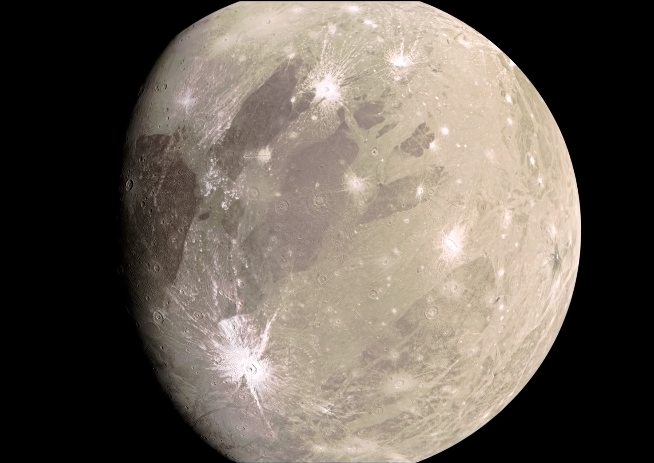
You are seeing a cross-section of Europa. This is its core sea of water above it, and above it thick ice sheet. We do not know how big is the ice sheet, maybe a few miles, maybe 10 miles or maybe more than that but this is an overall structure.
Still you can’t raise this question. How do we know there is a sea of water actually below this ice.
Now we have different type of clues about this.
The first thing is, we do not see many craters on Europa’s surface. This is strange because when we see our moon there are innumerable craters on it.
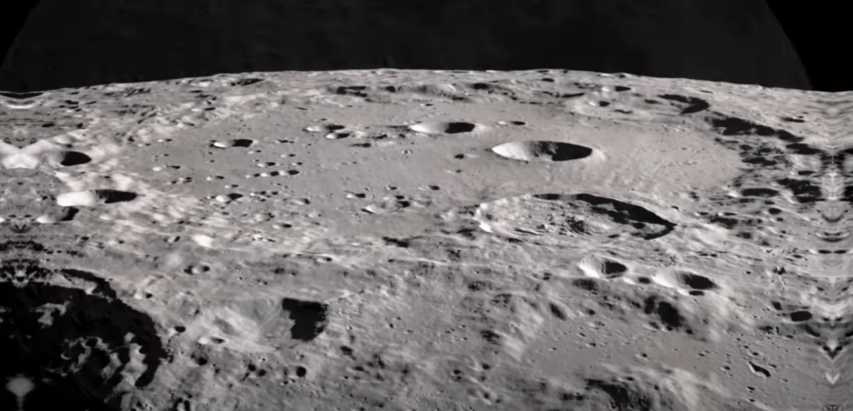
Because it has no atmosphere, so a crater is formed when anything collides with it. But if you see Europa, this is very smooth. This is the first hint that the marks of anything that collides with it disappears (this does not mean nothing collides). The reason of its disappearance is some slush present below.
Similarly, its feature, which Galileo spacecraft observed in detail, show many lines or fractures. These remind us like on Earth in arctic area or near Antarctica, then big blocks of ice pass away we see lines between them so the idea is this criss-cross patterns of Europa are Iceberg type of things.
When this Galileo spacecraft was orbiting Jupiter system it saw, that over a period of time, its features were moving, they must be moving in the same way, as if liquid is present below the ice. And not only this a few years back Hubble space telescope took a picture weather several pictures of Europa

Just imagine that Europa which is so far in a moon of Jupiter, not only has a lot of liquid water, it’s water is also saltish like about seawater. Its quantity, the estimate of the astronomer is, it’s quantity is more than the quantity of all the Ocean on this, but maybe the quantity is twice as much. And if you are still not amazed,
Recent Study
I’d like to point out a recent study in which they have talked about some circular type features that you noticed on Europa’s surface. Astronomers call it ‘Chaos Terrain’. So the question was what is it and how was it formed?
So the most recent analysis is that there are makes beneath the Chaos Terrain Lake type things.

So there is a little bit of water under the ice crust. And if you heat them on Earth people observe this type of terrain, so the idea is that the heat is generated from the bottom on Europa, and the layer of ice on the top collapses a little bit and because of this collapse, this circular feature develop.
So this is an interesting explanation of how old this Choas Terrain was formed but it has its importance. Because that means the way that material collapsed there, the ice sheet has a direct connection with Europa’s surface. This is important because if you want to know if life is possible on Europa or not, the question is whether the building blocks of life can reach the Sea from the surface or not?
So, because of this the Choas terrain tells us that the mixing of the ocean with the surface, to a great extent is possible. So the question of life is very important and Europa is a fascinating place for finding life. Because we believe that liquid water is essential for life and that is why there is an excitement to know whether the water is present somewhere in liquid form or a habitable zone. This is because we believe that where there is liquid water, there may be life.
Because we need more thing also with water. Energy, the energy we have from the Sun, give us energy for our life. But those hydrothermal vents, like underwater volcanoes on Earth, energy can also be obtained from the thermal volcanoes. The idea is that maybe even when life began on Earth about 4 billion years ago, it started near those hydrothermal vents, which are under the sea.

It started near those hydrothermal vents, which are under the sea. Because such organisms have been found that thrive on those extreme temperatures.
So the idea is on Europa, under its seas, similar hydrothermal vents are present as on earth. And because life thrives there on Earth, and maybe life also began from there, DDS, maybe on Europa also, life may have begun in those conditions.
Is there life on Europa?
We do not know but some mission are being planned, a mission called “Europa Clipper Mission”, schedule to be launched in October 2024, and it would take about six years to reach Europa, by 2030 or 2031. This is another mission, but one thing that is thought to be present on, it will be able to sample the water plumes of Europa.
It will go through these plumes and sample them so that we can know what’s in the water of Europa and maybe (I don’t know about it) it can test life as well.
But at other task of this clipper mission is to find a landing site because there is a plan to send a lender as well to Europa in the future. Rather, the lander should be such that it can go into its ocean, in a way it is called an aqua bot, which is a robot that goes into its ocean. But this is very very difficult thing.
Problems Aqua Robot Mission
The biggest problem with it is that we do not want to introduce our earthly life on Europa because we do not want to contaminate the ocean of Europa. So this is a big challenge, but this future mission will be planned in the next 10 to 15 years.
I think that at some point in the future, humans will also explore Europa but this is a matter of the future. But you can imagine this, there was a very short, independent, low budget movie called “Europa Report”. It is fine film, but it is based on a similar Europa mission, you can should check it out. Who knows what different type of lives evolved there is the last few billion years.
My Opinion
Now in my opinion, if we go there and simple, the ocean’s water, it would be more surprising for me if we don’t find any life there. I think raw material is also present, and energy also present and water is also present. Can there be life on Europa or in the Ocean of Europa? We do not know yet, but if I want to bet I would actually bet that maybe there is life in the seas of Europa.
